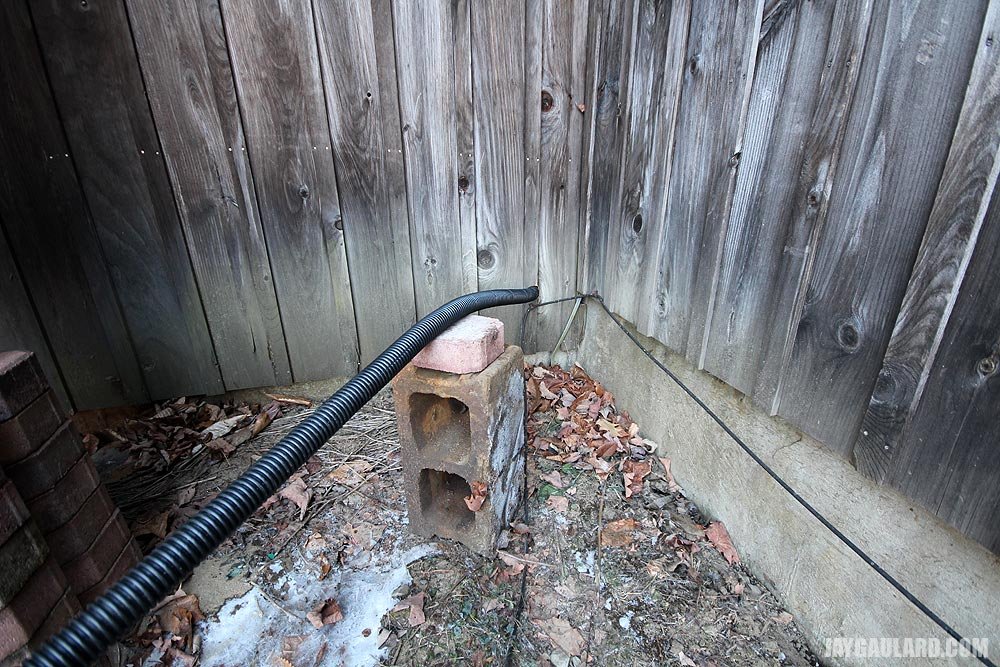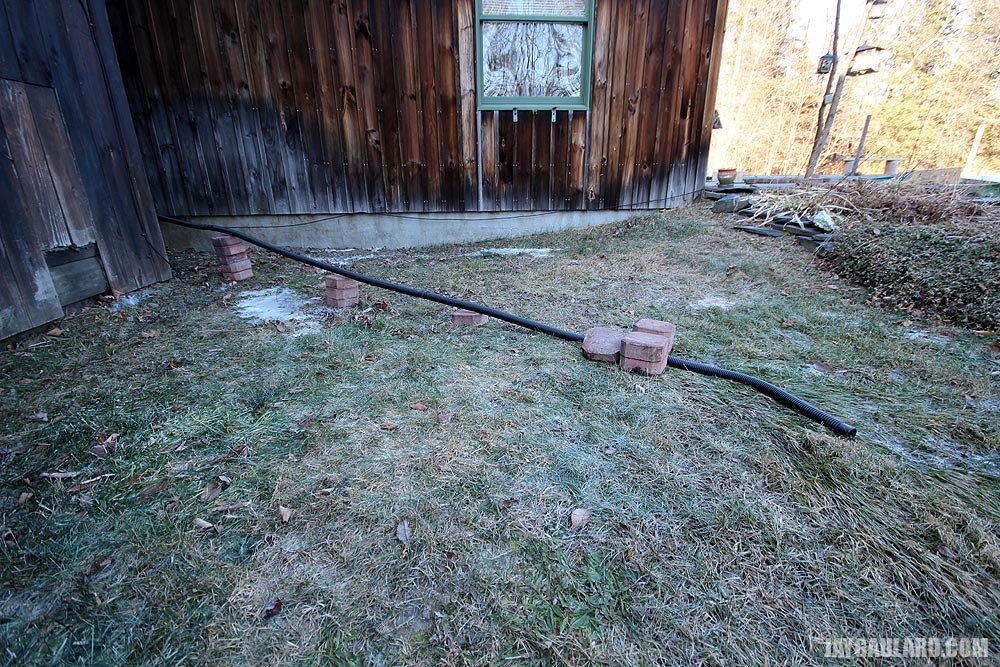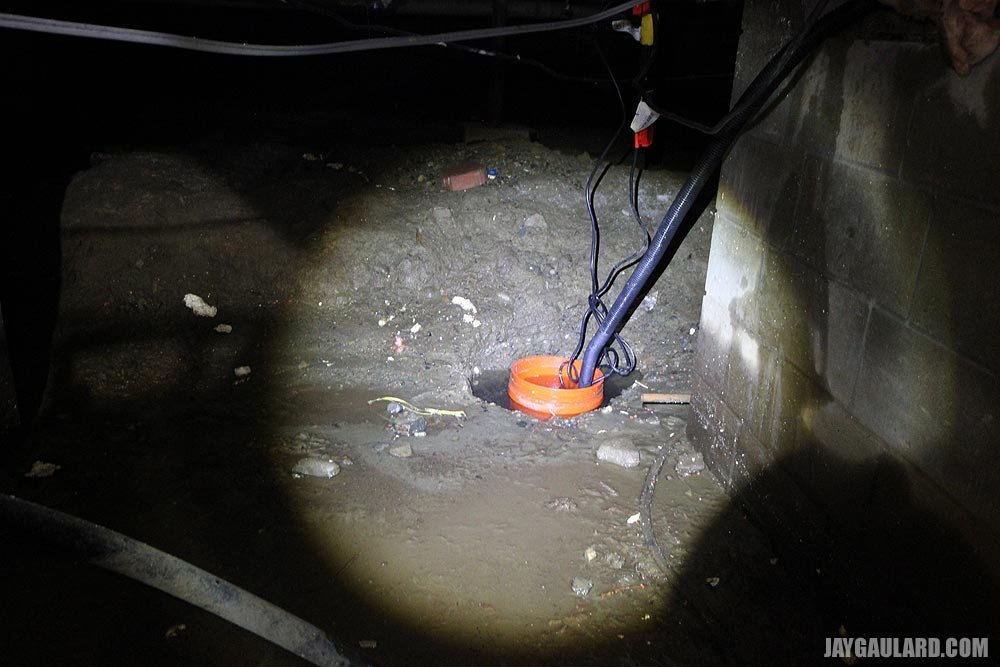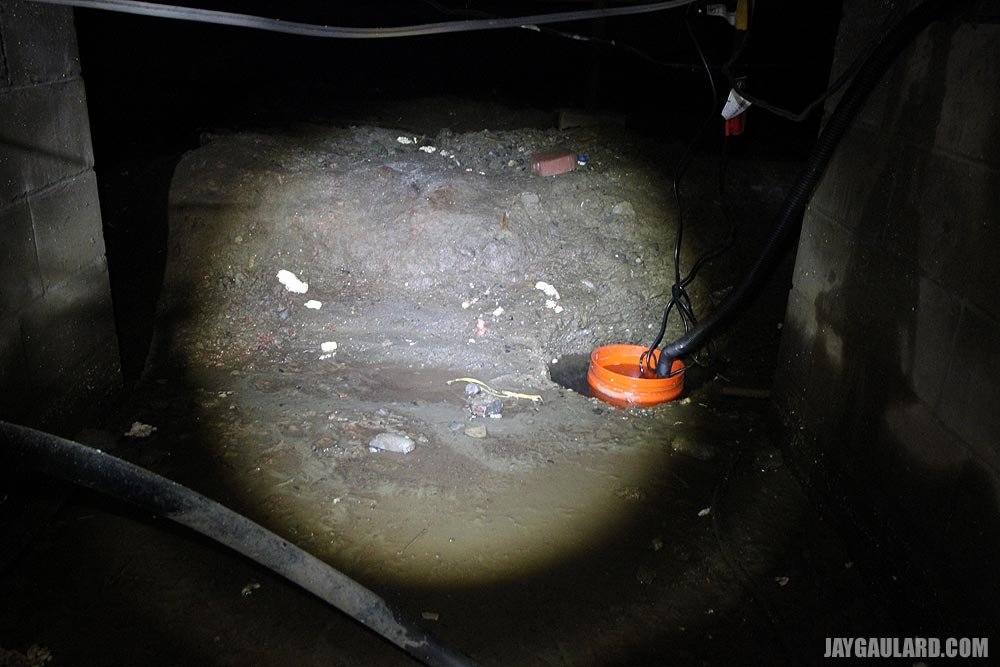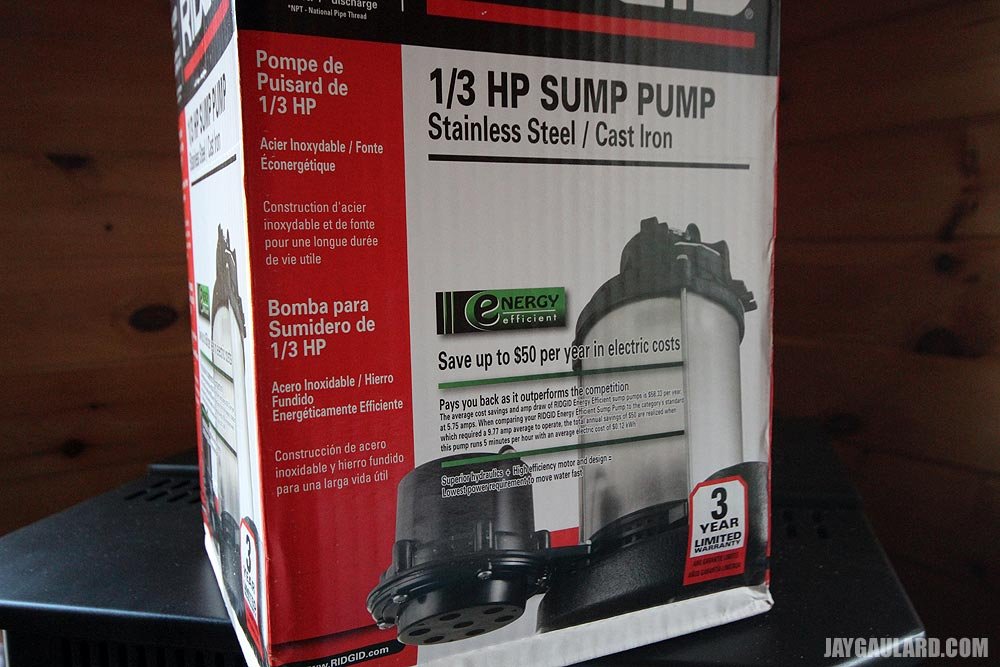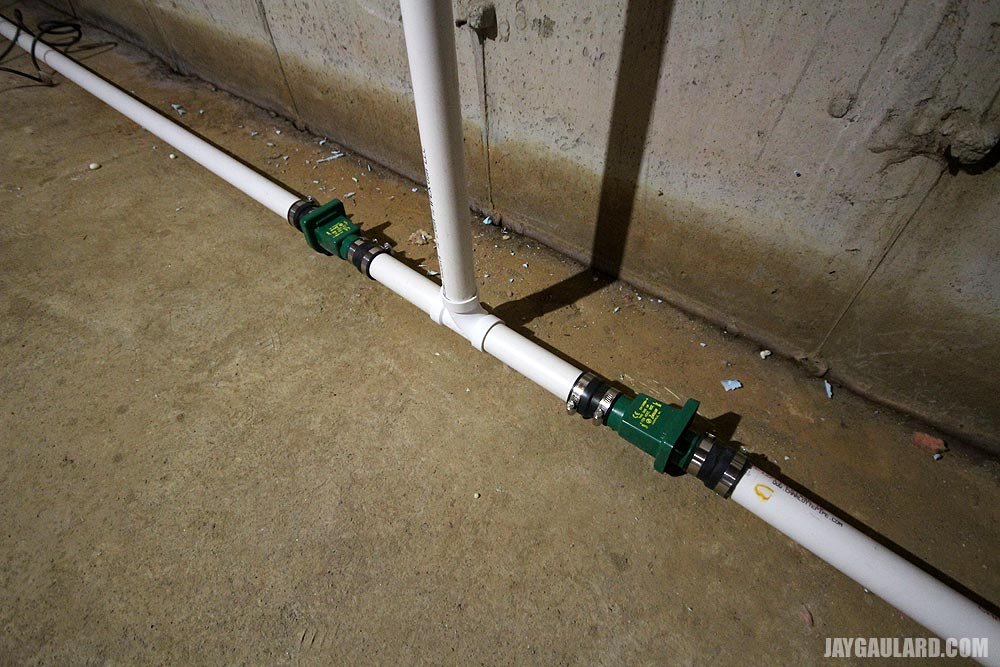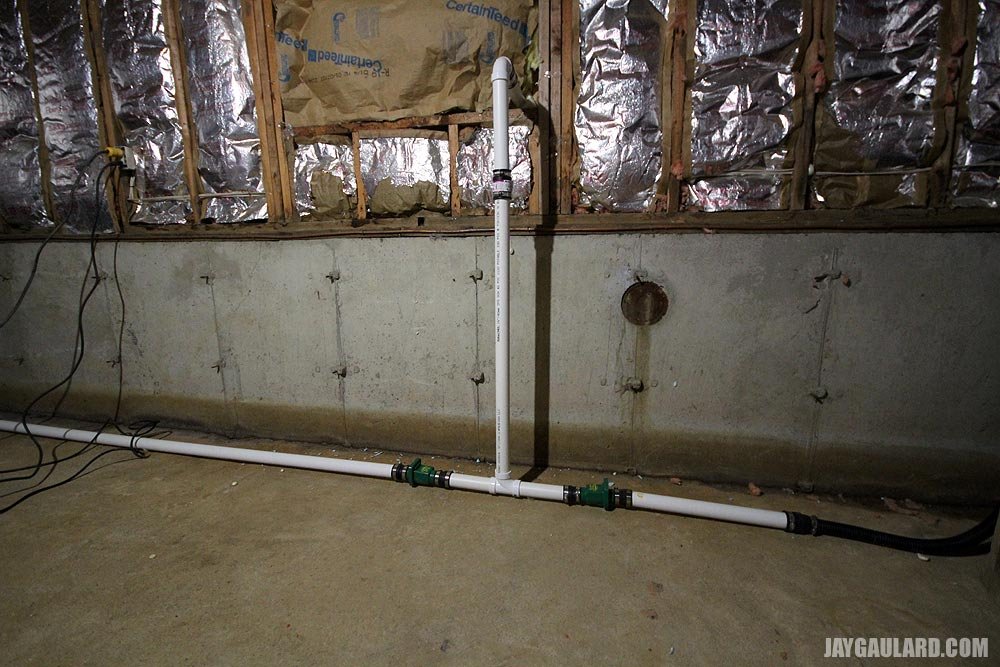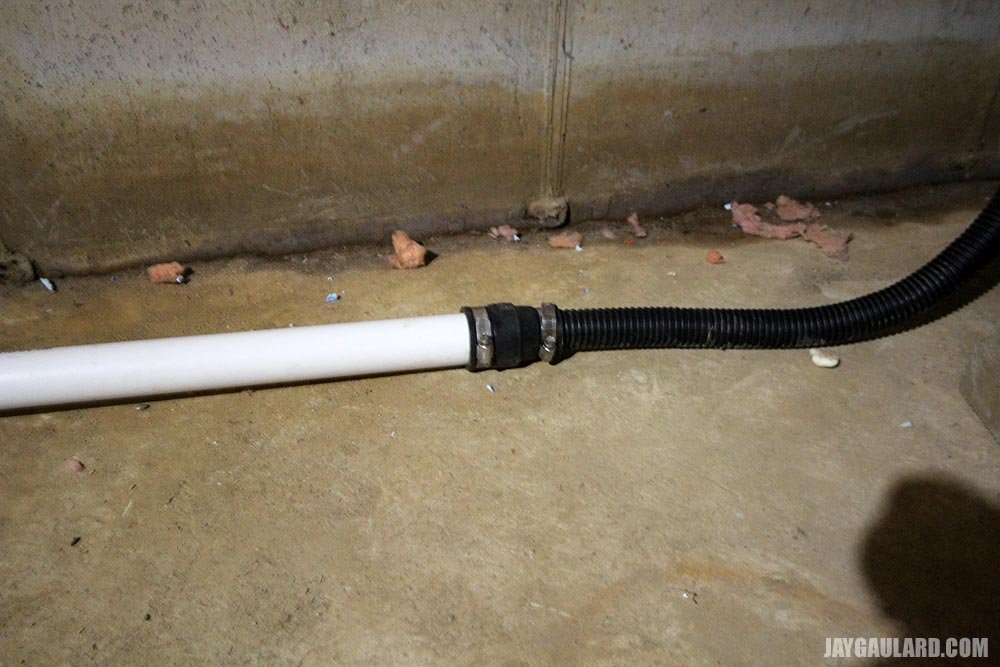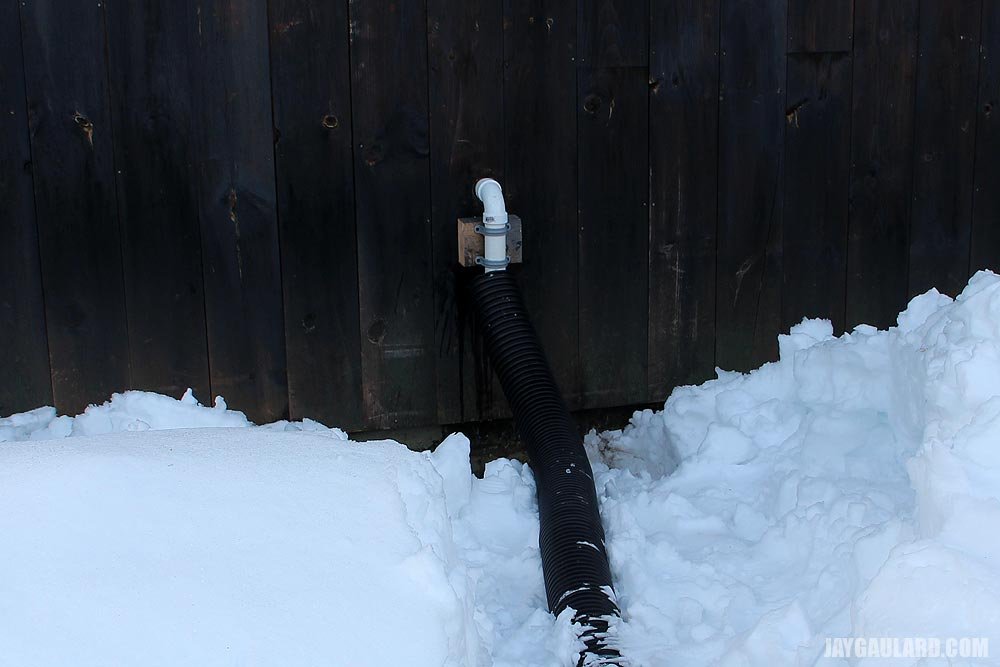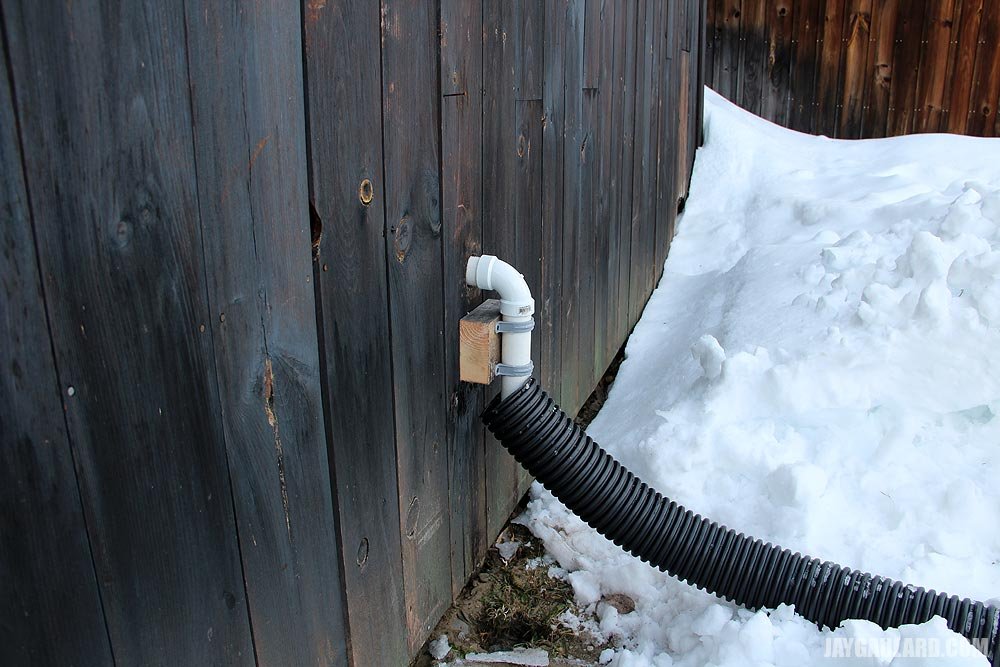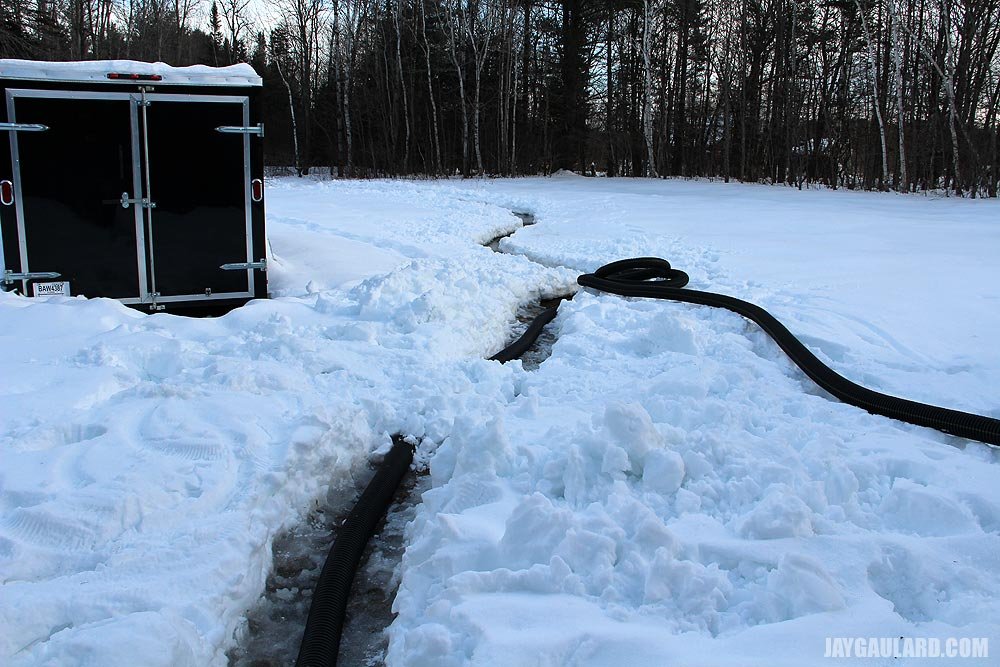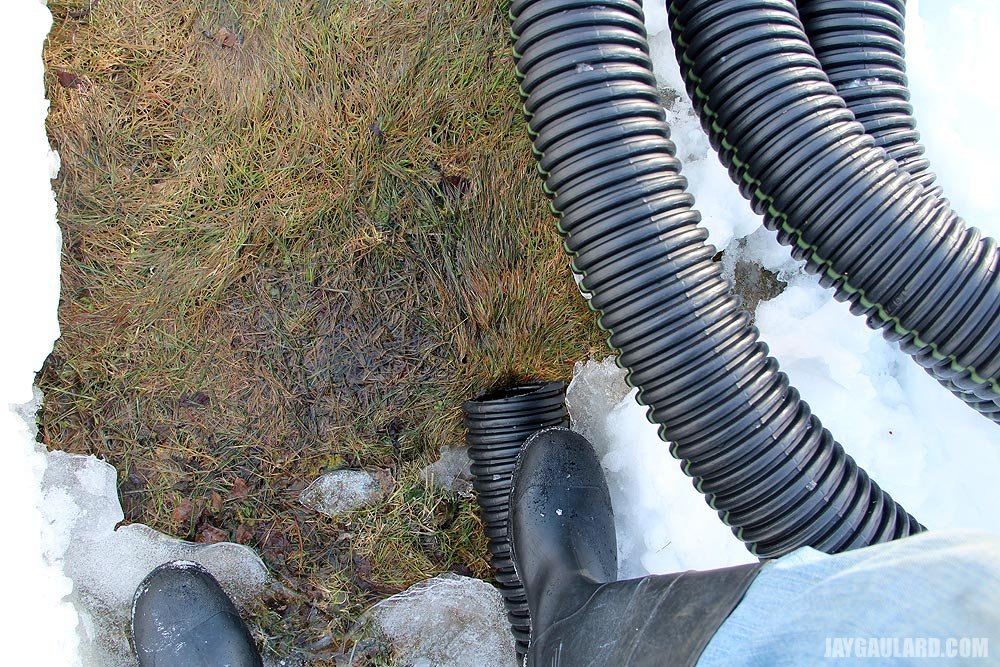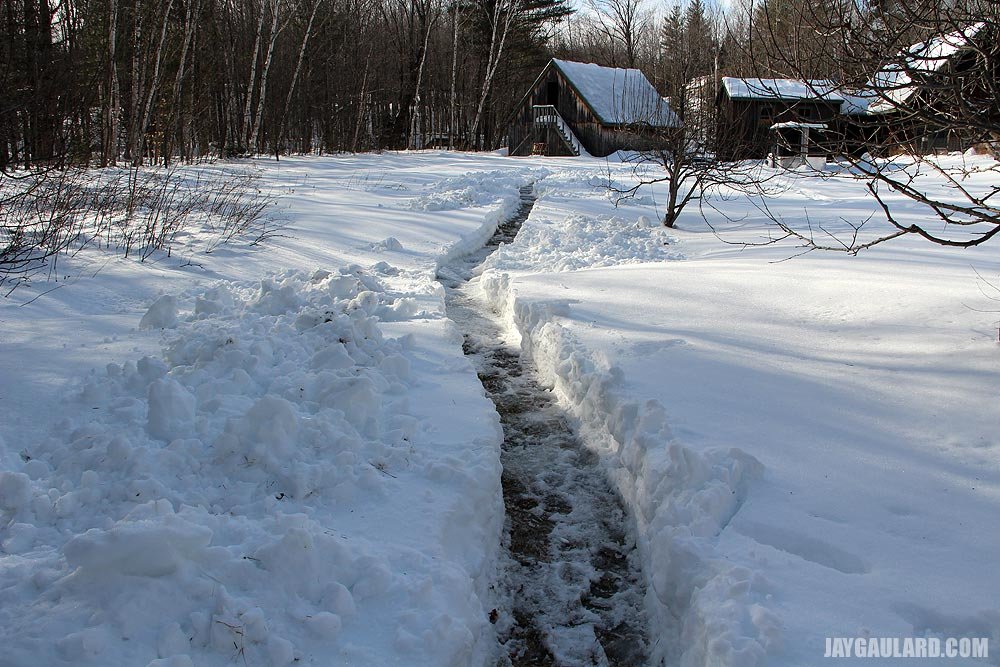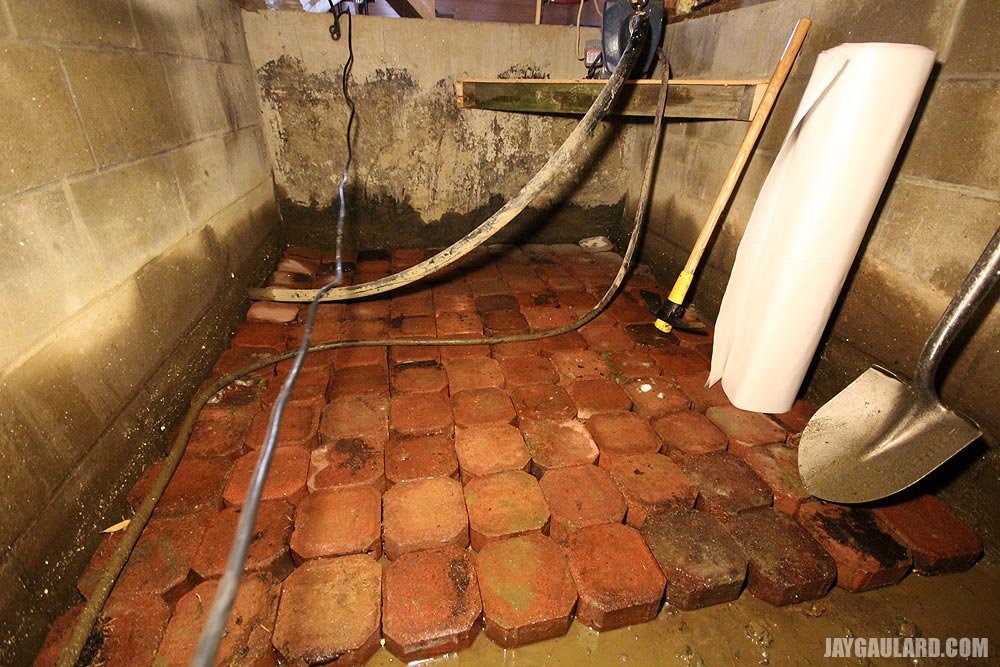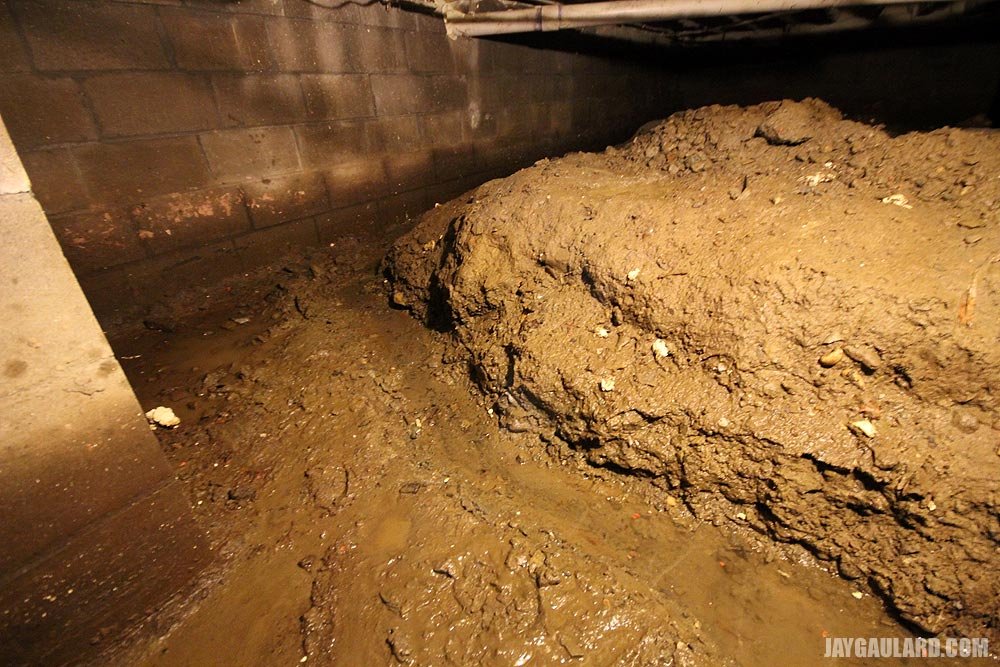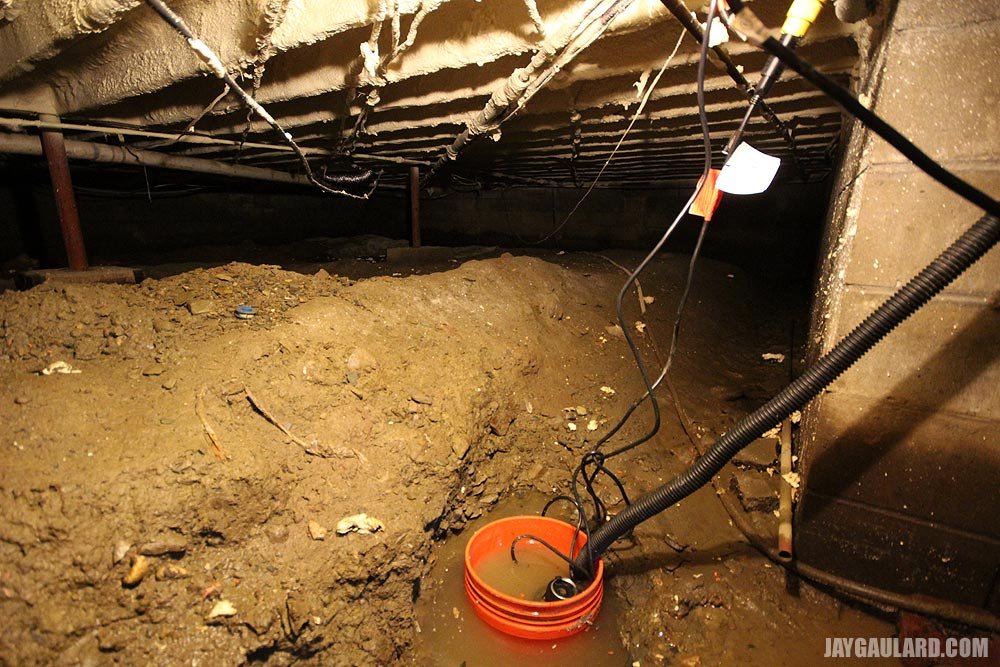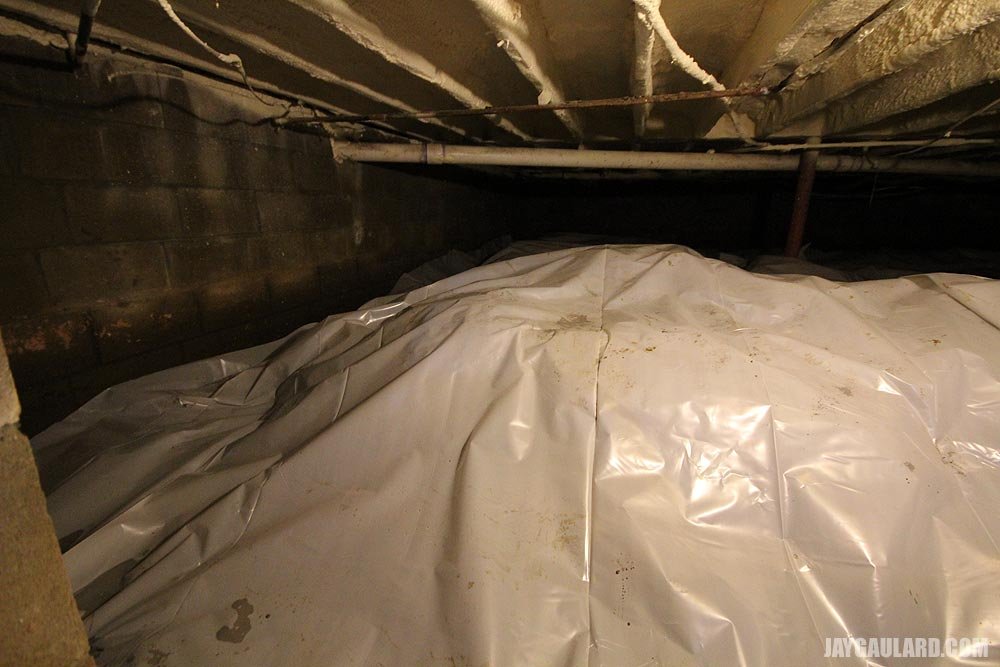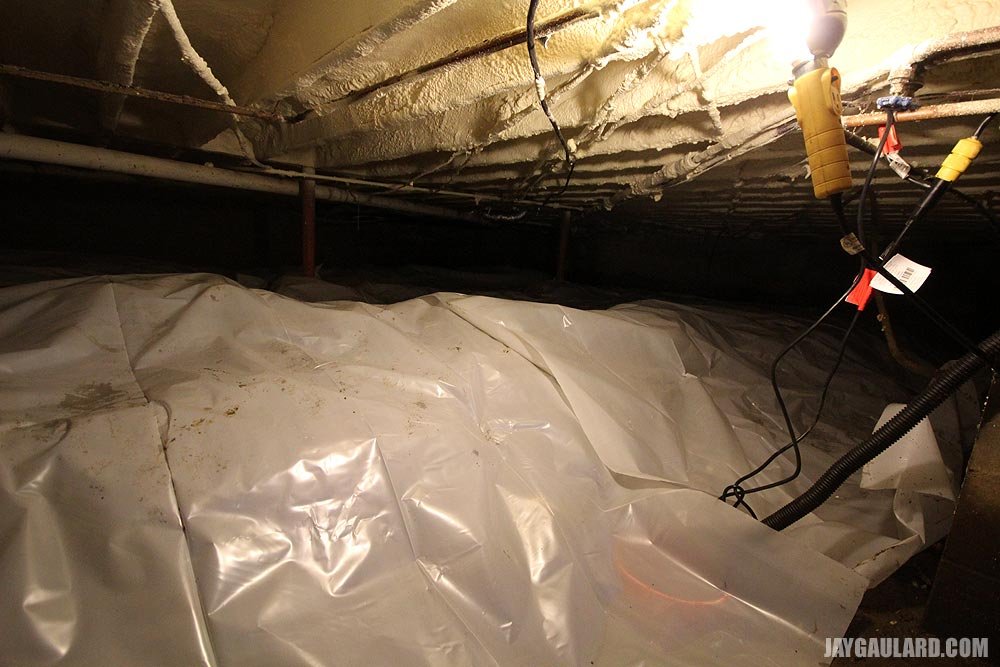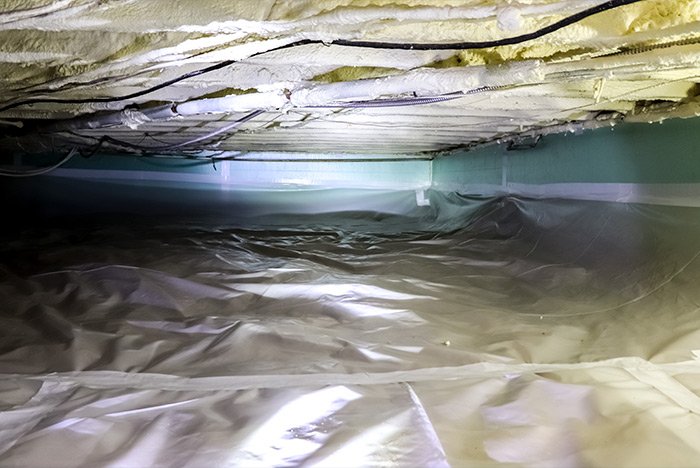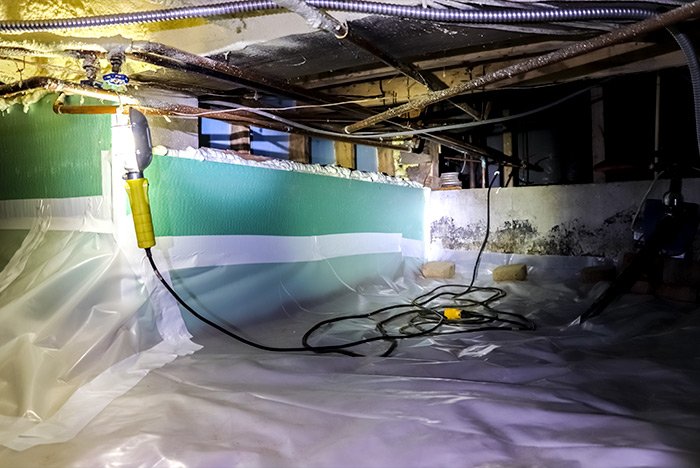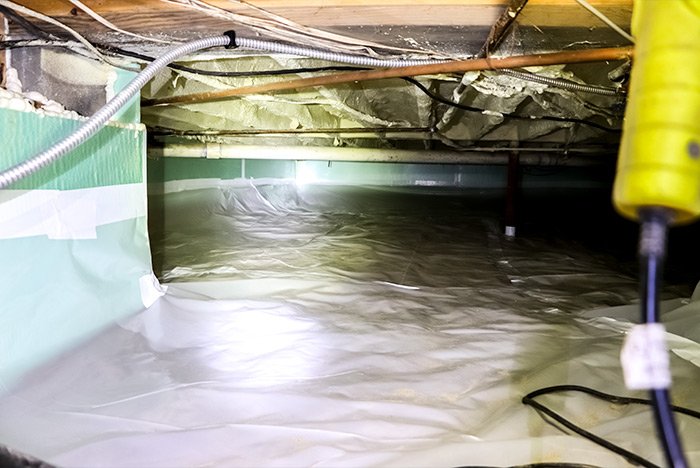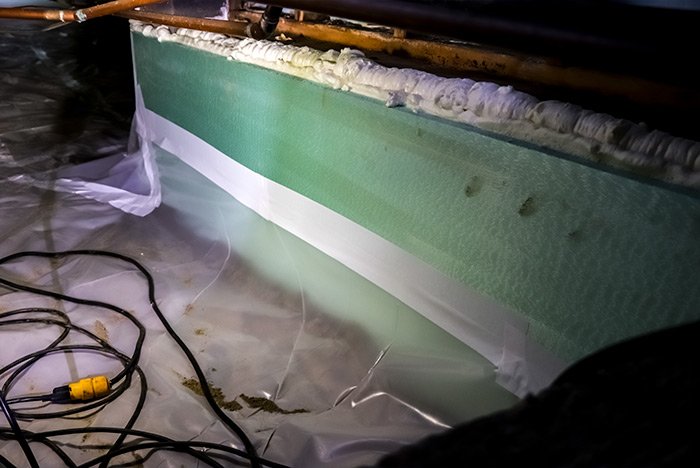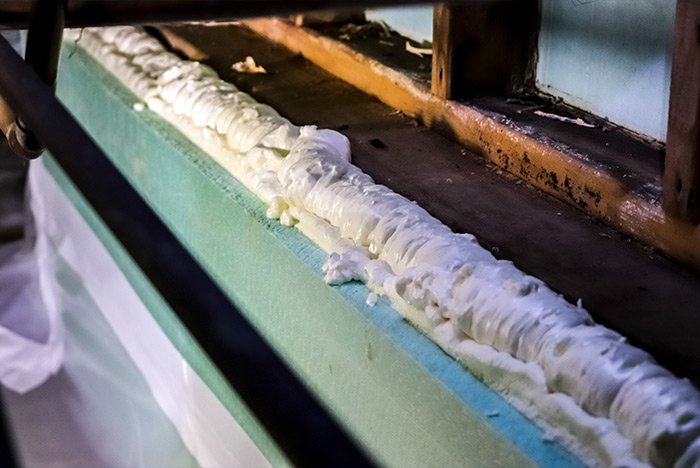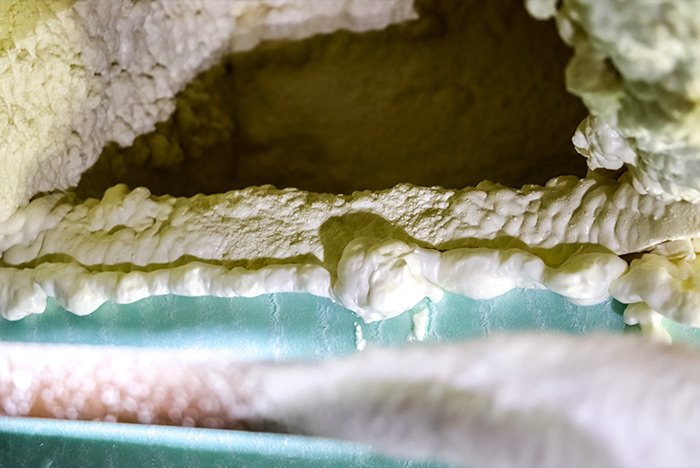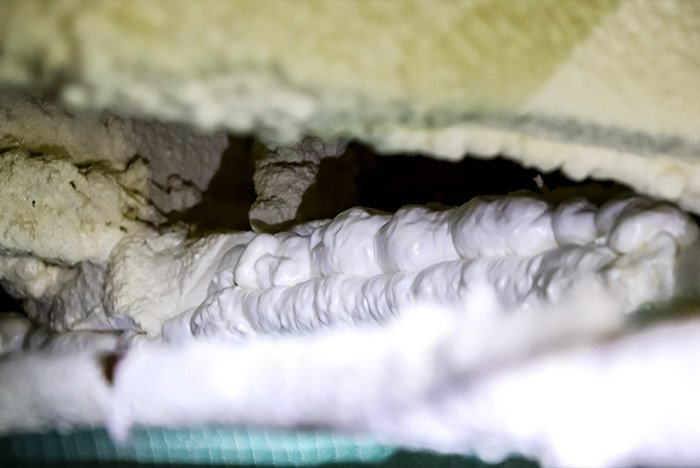Filling In a Basement Crawl Space
I’ve got a project to complete that I’m really not looking forward to. It’s called something like, “filling in the basement crawl space with gravel, dirt, sand…whatever.”
Do you remember back when I told you about my nifty installation of our sump pump? Well, that installation worked wonderfully. Every time the basement filled with water, I heard the pump go on and off – and on and off. And so on. It was fun to listen to in the beginning, but as time went on, listening to that pump, and connecting the sound of it to the electric bill, became less and less fun of an experience. And today, this very moment, listening to the pump turn on and off is ready to drive me crazy. It stopped raining a week ago and the pump is still working. Albeit it only turns on every hour or so, but it’s got me wondering, “Why in the world do we need to get this water out of the basement so bad?” I mean, I’m not sure if it’s just simple conditioning from what I’ve seen on TV or read on the internet, but really, why do we even have a crawl space? It was there when we moved in, but do we need it?
The answer is no. If we had a much more shallow crawl space, say 3 feet deep instead of 4 1/2, I would never see any water at all. It could rain all it wants to and the basement would never fill. I could keep the entire area covered with my plastic vapor barrier and no one would be the wiser. And the moisture down there would be virtually non-existent. The only problem is – yeah, you guessed it – actually filling in the crawl space. Who’s going to do that? My back truly isn’t looking forward to this one.
I just went downstairs with my pickaxe and shovel, with the intention of moving some of the dirt that was pushed to the middle of the crawl space, back out to cover the footings. I figured that all the material I needed was there. Currently, there’s sort of a moat around the perimeter of the entire area, with the dirt in the middle. Sort of like a donut. I was going to see how much of that moat I could fill in, as to raise the floor level down there.
Here is what the basement looks like if you were standing in the first section, looking into the crawl space. What you see is the vapor barrier with the sump pump underneath. Also, the lump under the vapor barrier is the existing soil.
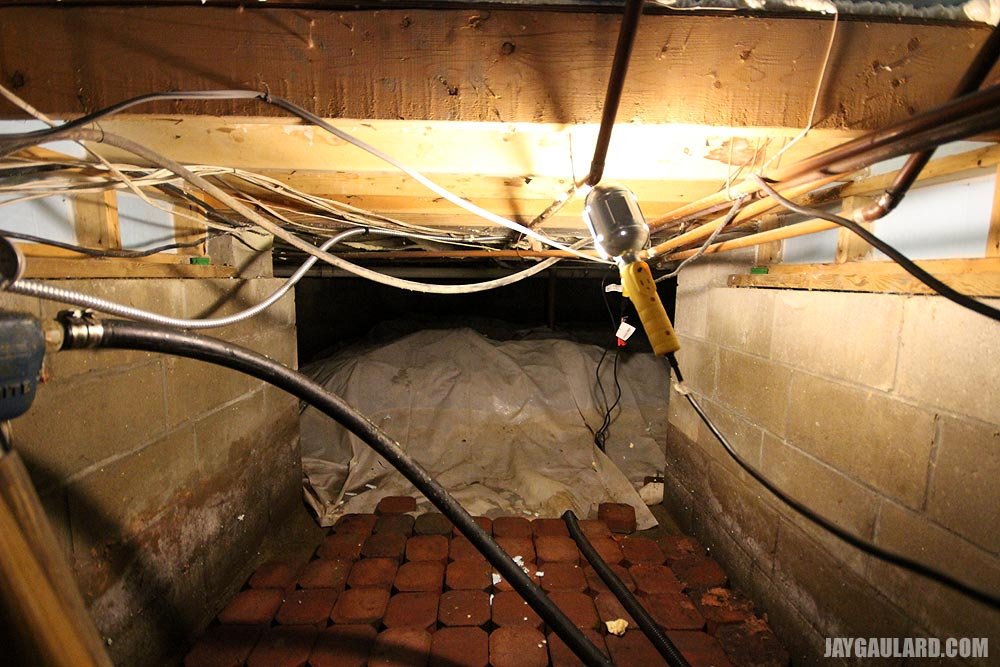
Moving further into the crawl space, if you look left and then right, here is what you see. I figured I could smooth out those dirt lumps and be done with it.
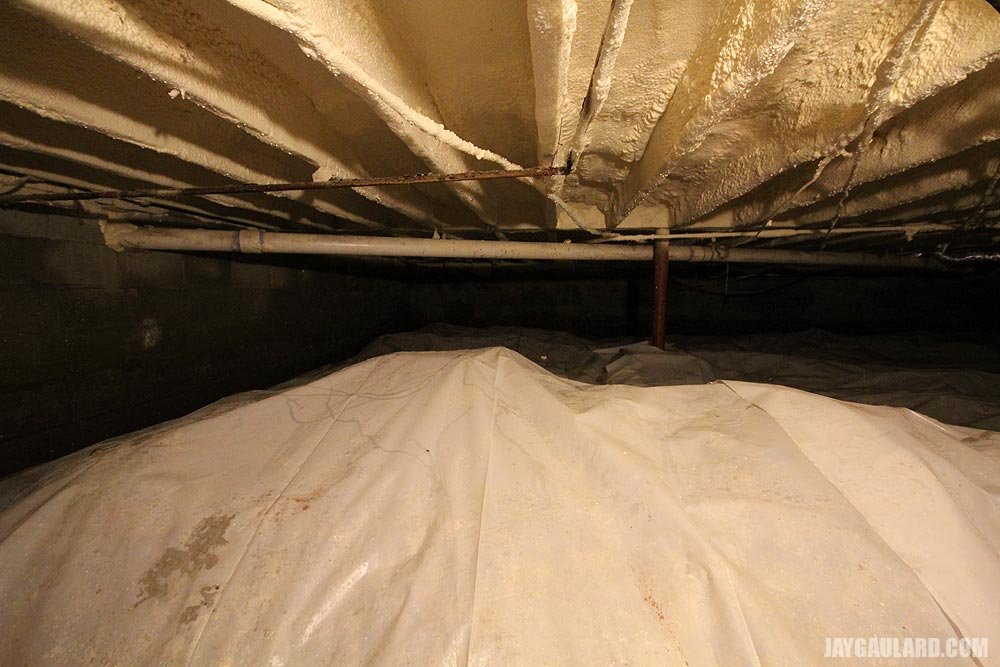
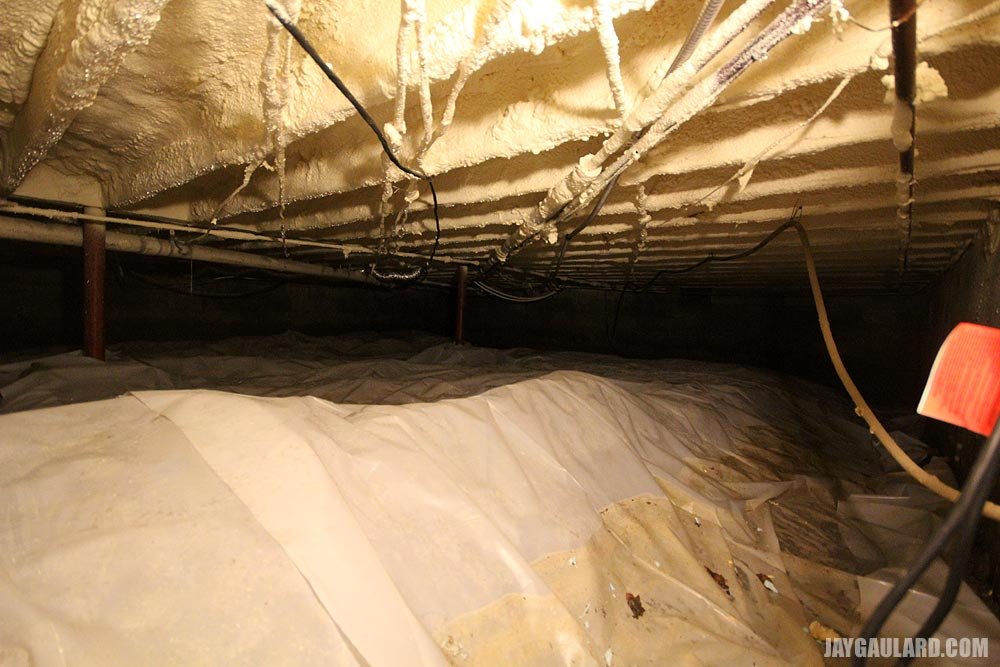
While I may be able to get away with moving some dirt around in the front section of the basement, there simply isn’t enough material down there to fill in the rear. And that’s where the major issues are. When water enters the crawl space, it sits on top of the plastic and puddles up. You can see how high the water gets, as indicated by the brownish color of the plastic in the above photograph.
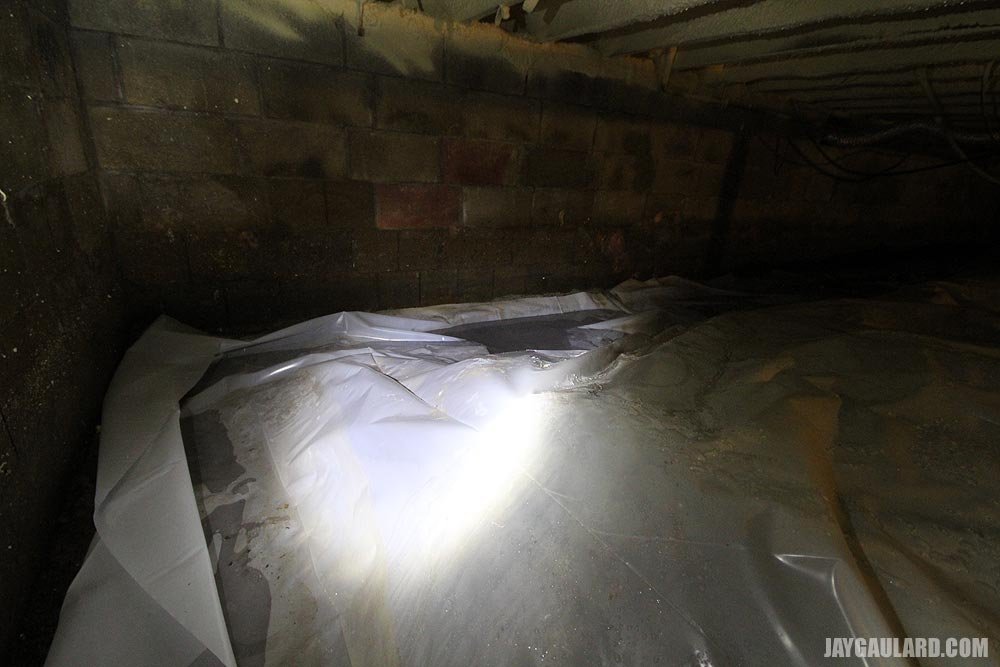
When I lift up and move the plastic over, what I just told you becomes even more evident. There just isn’t enough dirt in the crawl space to make a difference.
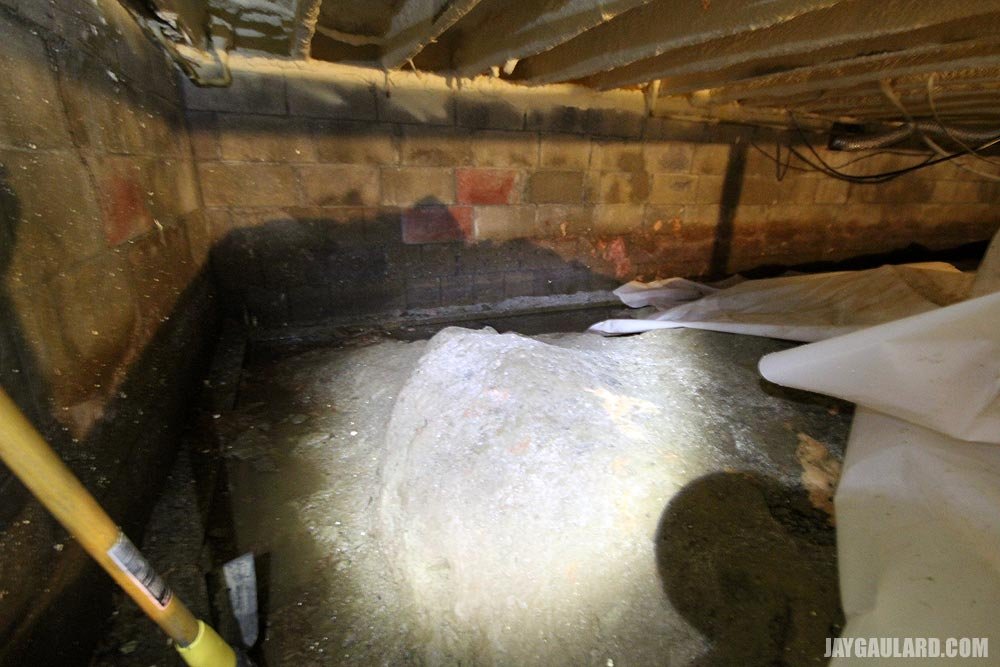
I think the plan is going to be something like this – order about 5 yards of pea gravel, or sand, or dirt – whatever is cheaper – and move the material down to the crawl space via 5-gallon buckets. I’m really not quite sure how that would work out over the run of this project, but it’s the only way I can think of right now. We also have a missing cement block that we use to vent the dryer, so I may be able to build some sort of a chute that I can slide gravel or whatever down. We’ll see what happens.
COMMENT: I am living on a small 100 year old farm in California. I have a poured concrete root cellar under the back room of the house, and it floods all the time, currently at nearly two feet of standing water. It destroys sump pumps, and the cracks in the walls flow with water, making it impossible to close with concrete. I am seriously considering filling with gravel and covering with plastic. How did it work out for you? Was there any settling due to added weight in there? Did you remove concrete flooring under the area you filled, or just fill on top of the concrete? Any help in this would be taken into consideration without liability.
COMMENT: Unfortunately, I haven’t gotten around to this project yet, although I have made up my mind about it. I’ll be ordering probably around 10 yards of pea gravel (or whatever is cheapest) and will fill the basement so it’s a few feet higher than it is now. I’ll need to use 5-gallon buckets to do this, which is why I haven’t bothered yet. In all honesty, I think this is the only way to solve the problem both of us face. We simply need to raise the level of the basement floor. Once that’s done, the plastic will cover it. I personally wouldn’t worry about settling or removing the concrete floor. I’m going to just cover everything up. If you do end up doing this before I do, I’d love to hear about your experience.
COMMENT: I have the same problem and plan on purchasing several yards of sand to build up the crawl space to make it higher than the outside. My plan is to use the cinder block size vent holes in the foundation of the house. I will get the sand under the house using the same method used at 1:01 of this video. You will see that they have taken a 10-12 ft piece of PVC and cut it long way – they push the sand using a hoe or shovel:
COMMENT: You could dig a trench around the perimeter of your house and fill it with flofill. Or, simply fill the crawl space with flofill or concrete to level that you like. I would definitely look into that if you want to save the back breaking work.
I Finally Filled the Basement Crawlspace with Sand
Did you know that basement crawlspaces were a “thing”? They are. There are people around this world who deal exclusively with them and there are websites dedicated completely to them. I should know. I just ordered some specialized tape from one of these websites. Crawlspaces are a hot topic on Youtube as well because they go hand in hand with the ever-popular subject of home insulation and to a lesser degree, the semi-popular structure of the home.
Okay, here’s the deal – crawlspaces are disgusting areas of a house that no one ever wants to spend any significant length of time in. Because of this, they’re often neglected and aren’t set up properly. This is especially true for older houses that aren’t up to modern coding standards. Many basement crawlspaces are damp or downright wet places that are breeding grounds for mold and rot. If you don’t attend to an area in this type of condition, your house can collapse. It’s true. Forget about the mold for a minute – your house can actually collapse. It can rot away right under your feet.
So, what’s the primary cause of mold and rot in a crawlspace? Many people think it’s water that accumulates under a home in the winter and spring. Since water tables are usually elevated during these times of the year, houses that were built in locations that are prone to either flooding or lack of drainage can have more than a foot of water sitting down in the basement for months. The truth of the matter is, most of the damage is actually caused by condensation during the humid summer months. Crawlspaces are notoriously cool and when the humid air from outside flows into these cooler spaces, the humidity condenses on anything it can and simply soaks what it touches. Think about taking a cold can of soda from your refrigerator and leaving it on your countertop at noon in July. Within an hour, you’ll have a puddle of water surrounding that soda. Now think about humid air flowing into your cool crawlspace 24 hours a day all summer long, via a vent of some other sort of air gap. All that wood down there is getting soaked to the core. And the insidious thing is, you can’t even tell it’s happening because the wood looks and feels dry. You have to use a special tool to measure the moisture content of the wood.
Our house had two issues. First, because it sits low in a high water table location, the basement would fill with about a foot of water during the months of April and May. This was just a given and I let it happen. When we first moved here, I freaked out when I saw this and I tried to pump the water out with a sump pump. That stupid thing ran all day and all night for weeks until I realized that the effort was futile. The basement kept filling up to that level, so I unplugged the pump and let it sit. It’s been that way for years. When the ground thawed, the water disappeared until the next year.
The second issue we had down there was general condensation and moisture. Apparently, there were quite a few gaps in areas that there shouldn’t have been and those gaps were letting air in. I mentioned in a previous post that we have two areas of the cement block foundation that had missing cement blocks. One of these openings was under ground and the other had the dryer vent sticking through it. Neither were sealed and when I went into the crawlspace to inspect the area, I found sitting water directly surrounding both of these spots. Also, any copper pipes above those areas had water dripping from them. Condensation is real and it works fast. It can create a four inch deep puddle overnight.
Another area of condensation was the concrete walls of the foundation. Those are generally cooler than the outside temperature, so they’re always wet. The condensation combined with groundwater leaking through the porous concrete can do a lot of damage. And finally, the dirt floor of the crawlspace itself is just plain terrible. It’s wet when it seems dry. Water incessantly evaporates from it. The problem is, covering it with plastic to stop the evaporation does little if the other issues I discussed are still allowing groundwater and condensation to infiltrate the area under a house. It’s a real mess that needs to be tackled aggressively.
I knew a sump pump didn’t work. I actually had two of them down under and they both didn’t work. The only alternative I had was to fill the crawlspace in with some sort of medium to raise the floor above the top of the outside water table. Essentially, to fill in the pond. The problem with that was, I didn’t have the greatest entry points. I considered filling five gallon buckets with sand or gravel and walking them down into the basement for about a year. Then I thought better of it. If I had tried that, none of you would have ever heard from me again. I would have jumped off a cliff half way through.
After cutting that concrete from the back pool deck (I'll write about that another time), I decided the best way to go would be to fill the basement with sand by shoveling that sand through both of those missing cement block holes I mentioned above. It was a thought, but I had no idea what type of effort would be needed until I started doing it. So I ordered some sand.
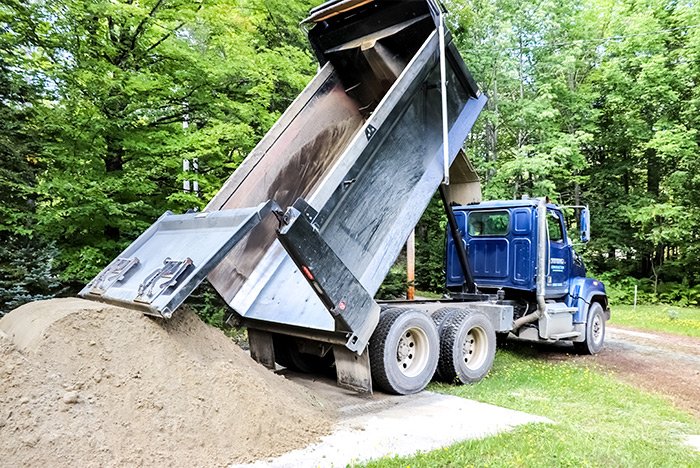
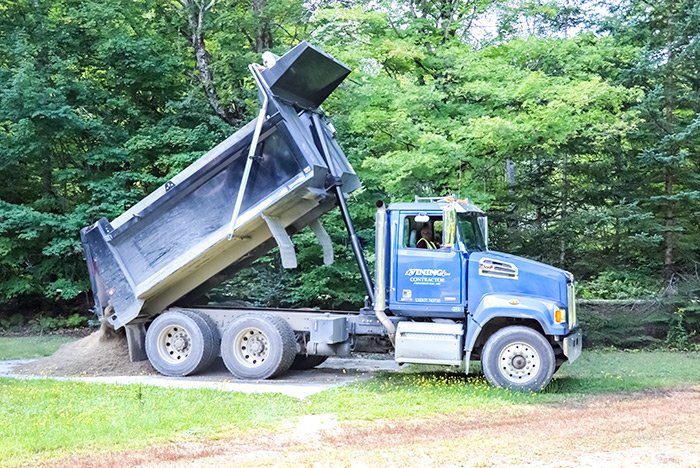
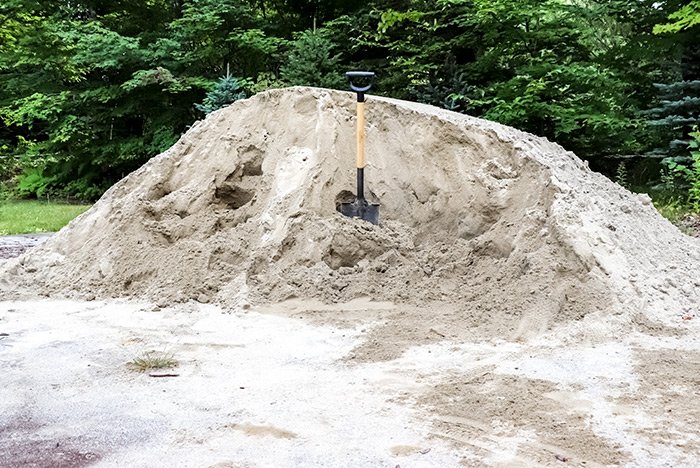
I first ordered ten yards and when the guy delivered it to me, he said that he gave me 12. It was a lot of sand and it took me about a week and a half to shovel it into a wheelbarrow, walk it around to the back of the house, dump it next to that small opening and then shovel it into the hole. Then, when I couldn’t fit anymore in, which usually took about five wheelbarrow loads, I’d have to go down into the basement to spread it around. I have no idea how many loads I had to walk around to the back of the house, but it was a horrible experience. I felt weak, it was hot outside and it was backbreaking labor.
After I finished moving the first pile, I called the sand people back and had them deliver another one. In all, I had 24 yards of sand delivered and I shoveled it all into the wheelbarrow and then shoveled it through those holes in the foundation. It was hundreds of wheelbarrow loads and I got it all done in less than three weeks. There were times when I was out there in the dark, leaning against my shovel, wondering when I would fall over. I didn’t though and as I sit here today and write, the crawlspace is chock full of all that sand. I still can’t believe it. By the way, the reason I ordered sand was because it was cheap at $11 per yard and because it shoveled easily. It also packs well.
I think I raised the floor above the water table. Take a look.
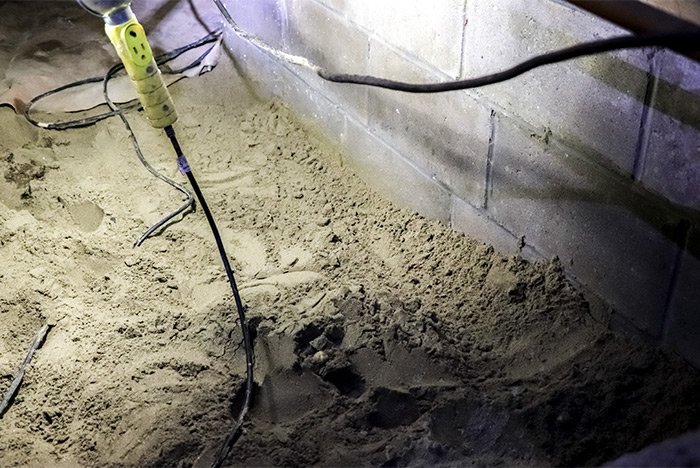
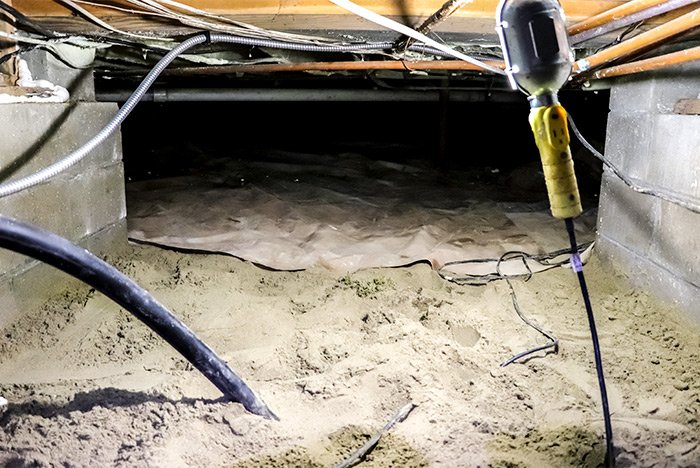
I used to be able to squat down there. Now I have to crawl and my back scrapes up against the ceiling. That’s what I wanted. For a before-view of the area, check out the photos above.
I still can’t believe I fit 24 yards of material down in that basement. My initial estimate was for about eight yards. It’s always more than I think.
Now that the basement has been filled and the water table issue has been dealt with, I’m tackling the condensation problem. To do this, I’m going to, what they call, “encapsulate” the area. That means that I’m going to fill in any air gaps that exist in the entire basement and then line the walls with rigid foam insulation and the floor with plastic. I already sealed the two fill holes with four inches of insulation and some very messy looking spray foam. It may be messy looking, but it’s good and solid and no air is leaking through. I’ll trim that later.
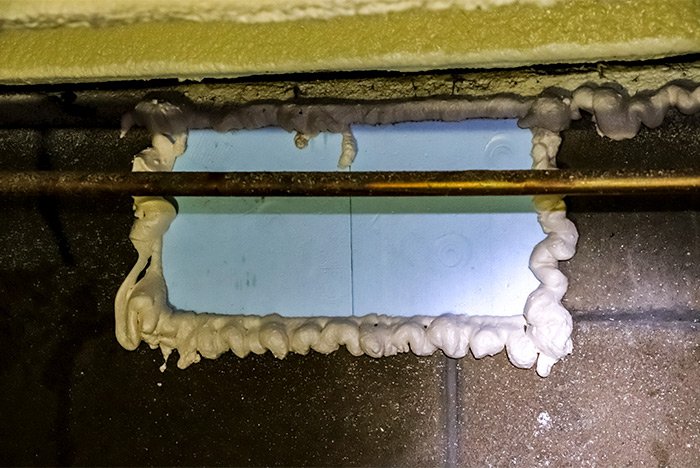
Again, that’s four inches of foam, which will give me an r-value of 20, albiet only in one area.
As I was sealing these two openings, I noticed that I could see daylight coming through from under the sill plate all around the house. All of these small leaks combined would probably equal a decent amount of humid air leaking into the basement. Since I had some of that foam sealer left over and since I have an itchy trigger finger, I decided to use up the rest of the can, sealing some of these leaks. If you ever have to use that foam for any reason, I suggest that you wear some arm and hand protection. I got a little on my arm yesterday and the foam dried. I had to shave part of my arm last night to get it off. Don’t tell anyone. It’s embarrassing.
Here’s what an unsealed sill plate looks like.
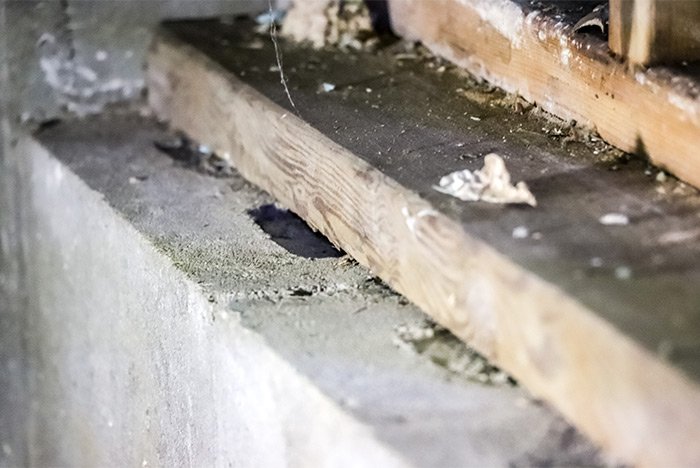
And this is what a sill plate looks like after it’s been sealed with the foam sealer.
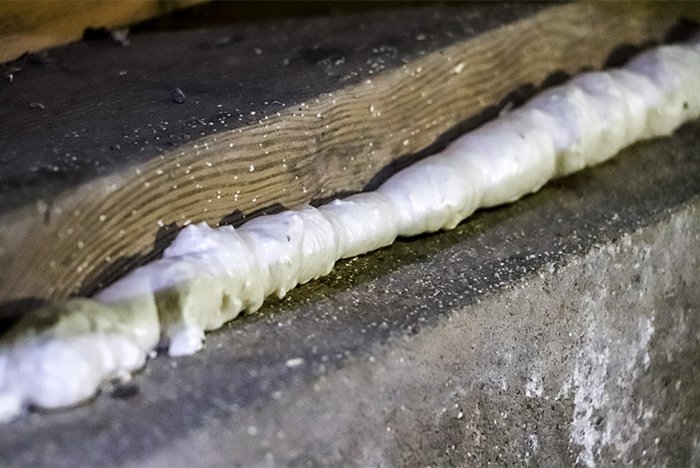
Since I ran out of foam, I went back down today with four tubes of siliconized caulk and finished the job. I went through everything with a fine toothed comb, so I know it’s solid and there are no air infiltration. The next step is to purchase about ten sheets of 2-inch thick rigid foam to attach to the walls using construction adhesive. This will make for a warmer basement in the winter and will create a vapor barrier to block all that moisture that comes through the walls from outside. It will also hide that cool cement surface so if any humid air does manage to get in, it won’t condense on it. I’ll tape any seams so the insulated surface is solid. After that, I’ll cover the floor with 6-mil plastic sheeting (on top of the existing plastic) and then tape that plastic to the insulation on the walls. Doing this will seal the area and no moisture from the floor or walls will be able to permeate the airspace. As a matter of fact, just by sealing the sill plate and the missing cement block areas, I can feel it drying out a bit down there. It’s incredible.
I’ll have to go to the store to get the insulation. That will cost about $30 per sheet. I ordered 12 10-ounce tubes of construction adhesive for about $56 two days ago. I also ordered a 10’x100′ sheet of 6-mil plastic for about $52, as well as a 4″x180′ foot roll of special “crawlspace” tape for about $80. Actually, it’s a 3-roll pack and it allegedly sticks to anything.
As for moving the sand around the crawlspace, most of it was straightforward. I threw each shovel full and eventually most of the basement was even. For the areas I couldn’t reach with my throwing, I built a sled to help out. I purchased a hard plastic tub from Tractor Supply as well as a pulley and some rope. I tied the rope to the tub and then snaked it through the pulley. I attached the pulley to the wall where I wanted to dump the sand. Then, I’d fill the tub, pull the rope and watch as the tub slide across the floor. Again, this was an awful experience that went on for far too long, but I got it done. I also feel a bit like a genius for coming up with the whole pulley idea.
After I encapsulate the basement, I’ll take some photos and post them here. If you have a crawlspace that’s wet, this is what you have to do to fix the situation. There’s no other alternative out there. Sump pumps can only do so much. Eventually, you’ll have to engage in some hard labor to get dry again.
Thanks for reading!
COMMENT: Great series of write-ups about your experience and efforts fixing up your home. Concerning the crawl space filling, how did you handle the sump pump tank/well/pit? Did you remove the sump pump, fill in the location, and forgo having a new sump installed since your now-filled crawl space is less likely to hold water? Or did you opt to still have a sump pump present, requiring you to raise the top of the sump tank/well/pit to match the new elevation of your crawl floor?
COMMENT: Great question. My goal with filling the crawl space was to remove the sump pump in its entirety. I wanted to make the floor inside the basement higher than the water table on my property. I pretty much did that. But since the sand settled about six inches after it got wet the first time, I'd actually like to put another foot of it in there. That'll be some day down the road. As of right now, I've got no sump pump and no plan on having one ever again.

